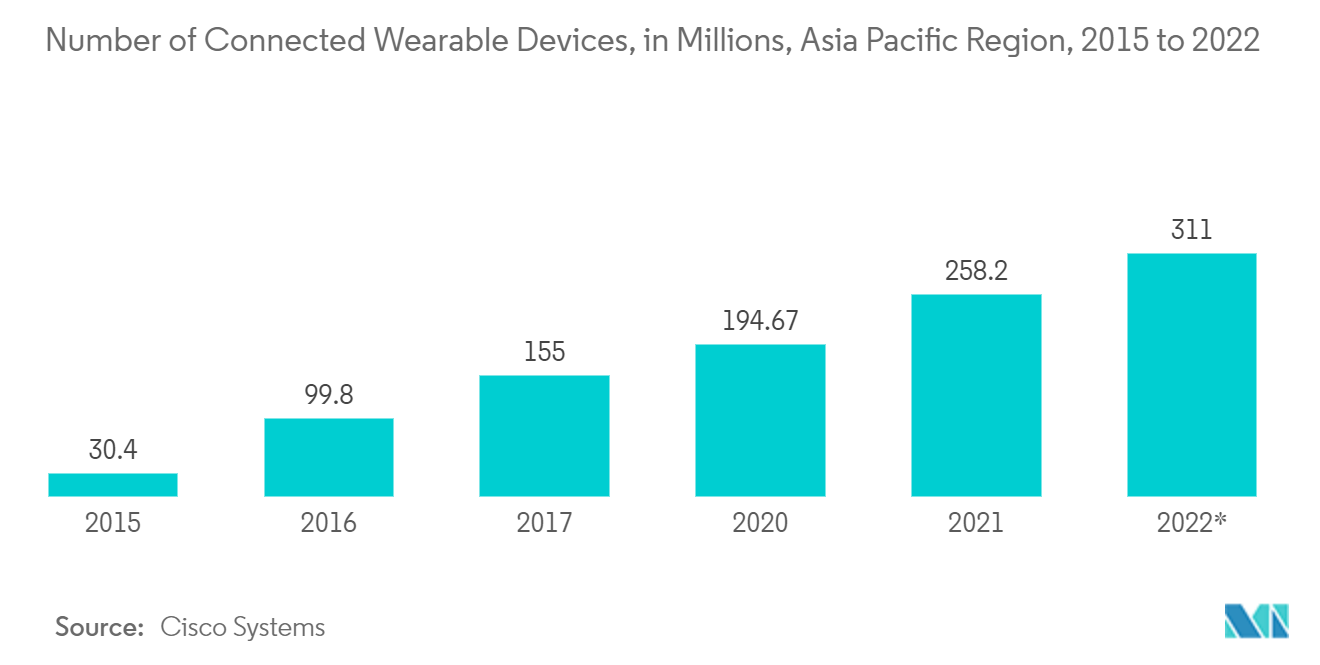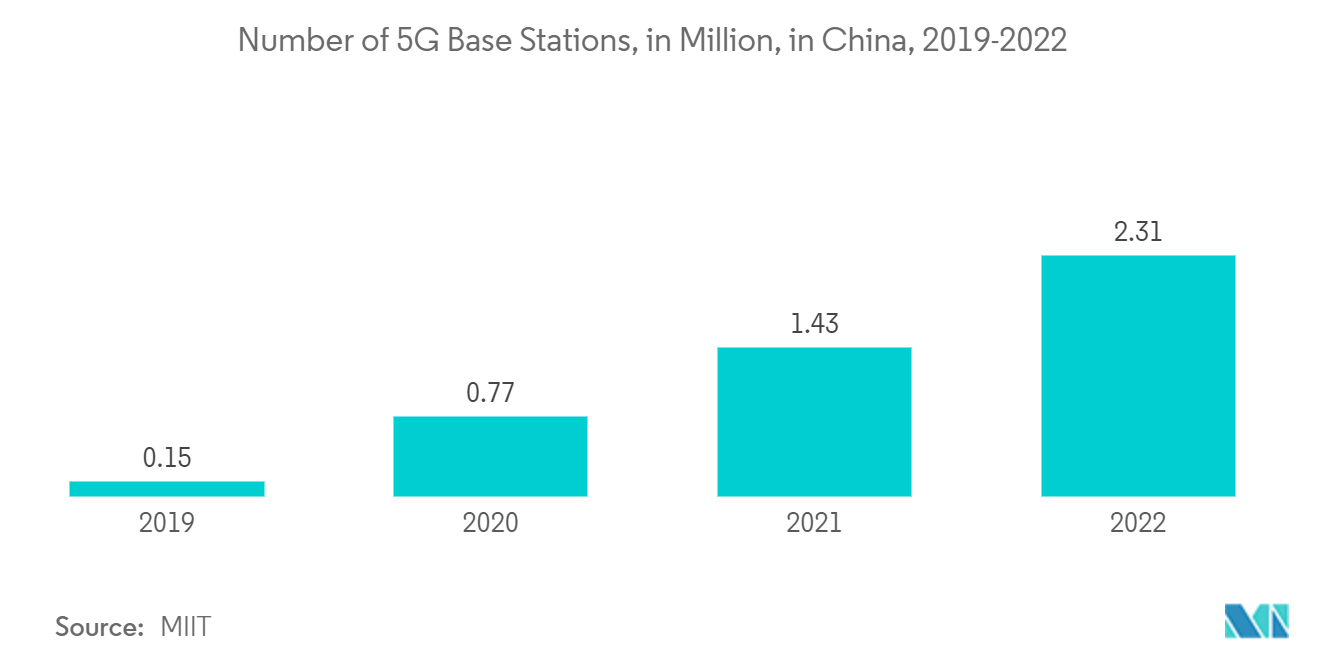Market Trends of Asia Pacific Wireless Healthcare Industry
Home Care Application Segment is Expected to Hold Significant Market Share
- Wireless sensors and wearable devices enable healthcare providers to remotely monitor patients' vital signs, health conditions, and medication adherence. This real-time data helps healthcare make real decisions and intervene promptly when necessary.
- According to Cisco Systems, The Wearables used in the Asia Pacific region is 311 million devices in 2022. Wearables used in North America and Asia Pacific are forecasted to account for around 70 percent of the wearable 5G connections globally in 2022.
- Home care applications enable patients to have virtual consultations with healthcare providers through video calls or other communication platforms. This is useful for follow-up appointments, routine check-ups, and non-emergency medical concerns.
- Patients with chronic conditions can benefit from home care applications that offer personalized care plans, medication reminders, and continuous monitoring. These applications empower patients to actively manage their health while staying connected to their healthcare providers.
- The adoption of home care applications in the Asia Pacific wireless healthcare market is likely to continue growing, driven by factors such as the need for remote healthcare services, advancements in wireless technology, changing healthcare delivery models, and the emphasis on patient-centered care.

China is Expected to Hold Significant Market Share
- China has actively promoted digital health initiatives as part of its healthcare reform efforts. The Chinese government has recognized the potential of wireless technologies to enhance healthcare accessibility, quality, and efficiency.
- Telemedicine has gained traction in China, specifically in remote and rural areas where access to healthcare services can be challenging. Wireless communication technologies have enabled virtual consultations, diagnostics, and follow-up care through platforms connecting patients and healthcare providers.
- Wireless devices and sensors have been increasingly used for remote patient monitoring in China. These devices allow healthcare providers to track patients' health conditions in real-time and provide timely interventions when necessary.
- The deployment of 5G technology and expansion of 5G base stations have the potential to impact the wireless healthcare market in China significantly. 5G technology offers faster speeds, lower latency, and increased connectivity, enabling various healthcare applications and services that rely on real-time data transmission and communication.
- According to MIIT, By the end of 2022, the number of 5G base stations in China was approximately 2.31 million. With extensive infrastructure investments and ambitious rollout plans, China has achieved significant 5G coverage. According to forecasts, by 2024, the number of base stations was projected to reach about six million.

